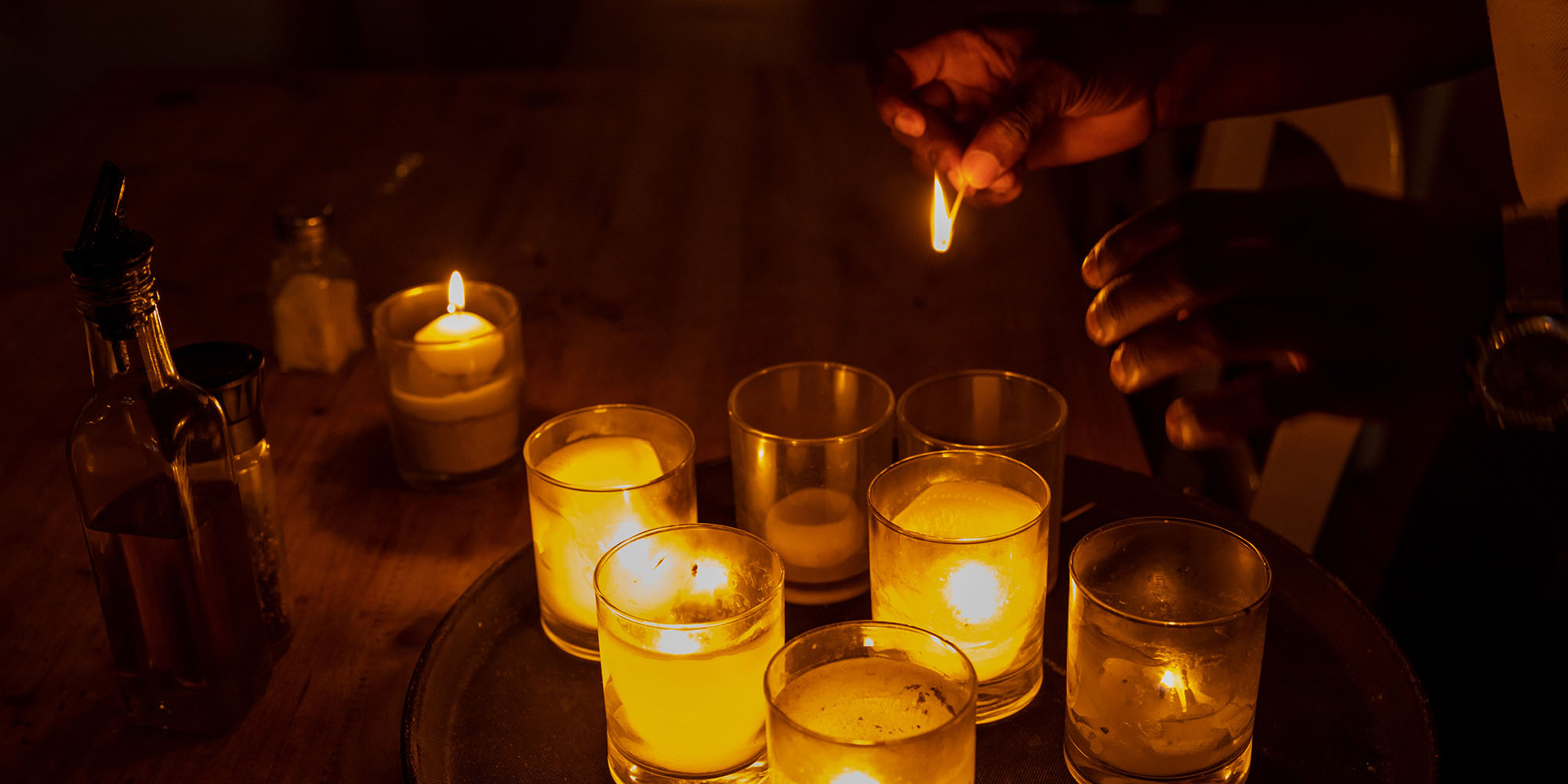“Even if we are to see a significant period of less load shedding or [a] consistent number of days without load shedding, this situation has not gone. We have not resolved the problem,” said Minister of Electricity Kgosientsho Ramokgopa during a press conference, following the return of Stage 6 rolling blackouts on Friday, 24 November.
At noon on Friday, the country was moved to Stage 6 power cuts as diesel reserves ran low. South Africans will be in the dark all weekend, with load shedding for blackouts continuing until 5am on Monday.
Loadshedding will be increased to Stage 6 from 12:00 until 05:00 on Monday. pic.twitter.com/bxMYagj0Jb
— Eskom Hld SOC Ltd (@Eskom_SA) November 24, 2023
Eskom, in a later statement, said the push to Stage 6 was due to the breakdown of five generating units over the past 24 hours, resulting in a shortage of generation capacity. Additionally, it said it needed to replenish its emergency reserves.
Ramokgopa and several members of the Eskom team, including Eskom’s head of generation Bheki Nxumalo, addressed members of the media on the state of the system on Friday afternoon.
South Africa is enduring its worst year for power cuts by the monopoly energy utility. In October, rolling blackouts were less intense than they had been in a very long time. (To track the days and stages of rolling blackouts, see The Outlier.)
Eskom’s energy availability factor (EAF) reached 60% near the end of October, its latest system status report shows. This followed the return to service of Kusile Unit 1 on 16 October, and the recommissioning of Unit 3 at the end of September, which brought an additional 1,600MW to the grid.
But, after breaking 60%, Eskom’s EAF has declined, and was languishing at 56% last week.
On Sunday, 19 November, Ramokgopa said recent unplanned outages at other power stations were a “major disappointment”.
Read more in Daily Maverick: Koeberg’s Unit 1 back online, while Ramokgopa bemoans failure at Medupi and other units
During a visit to Medupi power station on Thursday, Ramokgopa said load shedding would continue to be implemented this festive season, but at lower stages.
“We see a festive season of extremely low levels of load shedding,” he said in an interview with SABC.
On Friday, Ramokgopa reiterated this statement, saying that with the return of more generating units “we will see significantly reduced levels of load shedding”.
“It will not be uncommon that for some days during the December period you’ll not have load shedding,” he said.
 Electricity Minister Kgosientsho Ramokgopa. (Photo: Per-Anders Pettersson / Getty Images)
Electricity Minister Kgosientsho Ramokgopa. (Photo: Per-Anders Pettersson / Getty Images)
Why Stage 6?
Firstly, unplanned breakdowns at Eskom power stations stand at about 15,300MW. This, Ramokgopa said, is not “out of the norm” and shouldn’t put us at Stage 6 on its own.
But, Eskom had “overcommitted” its reserves, according to Ramokgopa. The reason provided was that over the past few weeks, several units have experienced a higher number of boiler tube leaks and as generation capacity teetered, Eskom was forced to rely on its emergency reserves. With emergency reserves running low, Eskom needs to protect its reserves and that means Eskom doesn’t have the benefit of running its pump storage reserves and open cycle gas turbines.
Read more in Daily Maverick: How to make six stages of load shedding disappear
“For purposes of protecting the grid, we need to ensure that we continue to protect the reserves, so we’re not going to engage them at a heightened intensity,” said Ramokgopa.
“As a result of that, it calls for the intensification of load shedding.”
He described the return of Stage 6 as a “significant setback”, but said Eskom’s “trendline still looks positive”.
Ramokgopa added that the return to service of Kusile Unit 2 expected at the end of November will provide an “additional buffer”.
“The more additional megawatts we add onto the grid… means that even if we were to have a situation where you have a cluster of units failing, you have a significant amount of play. So the degree to which you are able to intensify load shedding will not approximate the levels we are experiencing now.”
What’s the plan to get us off Stage 6 (fast)?
According to Ramokgopa, the plan to get to “significantly lower stages of load shedding” is twofold: replenish the emergency reserves and accelerate the return to service of units that have broken down.
Responses from political quarters
The DA and ActionSA have castigated the ruling party for the return of Stage 6 load shedding on Friday.
DA Shadow Minister of Mineral Resources and Energy, Kevin Mileham in a statement, said the resurgence of Stage 6 power cuts “comes as no real surprise”.
“President Ramaphosa and his cabal of Electricity Ministers – Gordhan, Ramokgopa and Mantashe – have dropped the ball on the electricity crisis and have made no real progress in implementing solutions.”
“We need to acknowledge that the priority must be addressing the shortfall of generation. Despite Minister Ramokgopa’s frequent reassurances, the energy availability factor – the percentage of generation capacity actually producing electricity – of Eskom’s generation fleet is nowhere near 70%,” said Mileham.
In a statement, ActionSA party leader Herman Mashaba bemoaned the ruling party’s “empty promises to fix the electricity crisis”.
“ActionSA believes the return of load shedding Stage 6 barely a week after the national voter registration weekend highlights that the ruling party cannot be trusted when it promises to bring an end to rolling blackouts, and that it is simply unable to fix the current energy crisis,” Mashaba said.
“Load shedding, which has cost South Africa thousands of jobs, is a self-made disaster by the ruling party which it has time and time again proven unable to address.” DM




 Electricity Minister Kgosientsho Ramokgopa. (Photo: Per-Anders Pettersson / Getty Images)
Electricity Minister Kgosientsho Ramokgopa. (Photo: Per-Anders Pettersson / Getty Images) 